
Here is the first part to come off the lathe, the bellows inlet valve housing. I'll be using the last of the batch of bellows i made up some years ago.
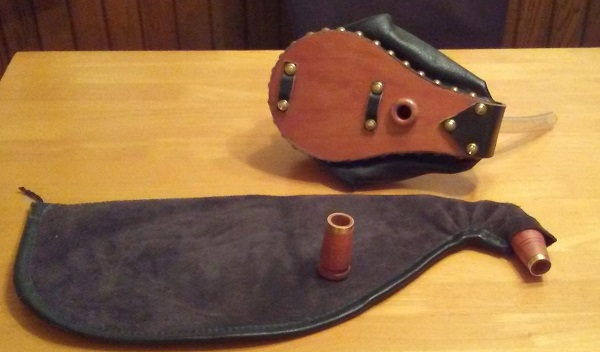
The bellows just needs some belts and cushions, and it's ready to go.
Here we've got the chanter stock and blowpipe stock ready to tie in. The bag is a 3/4 size highland pipe bag from L&M.

Here's the blowpipe and its stock. This is my "mark 2" design, made to use the "Little Mac" valve which i've found to be nice and not burpy.
The free end of the blowpipe is made to be a nice airtight fit into the hose from the bellows. This is a design i've used for years, it's really stable and doesn't pull out by accident. There's no extra fittings, so it's quite easy to adjust by simply adjusting the length of the hose.
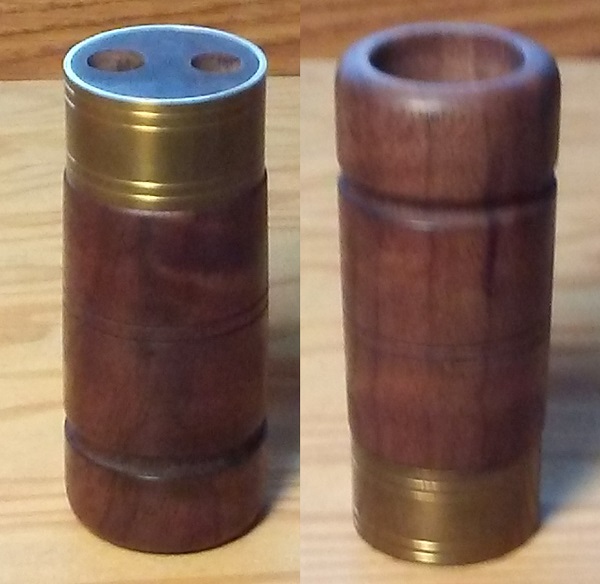
(I'm really sorry about all these terrible photos, i don't have my real camera handy so i'm stuck using my cellphone. Anyway.)
Here is the drone stock, made of walnut. The one piece of plum i had that was large enough turned out to be kind of punky inside. I didn't really trust it to be structurally stable, especially once it was hollowed out.
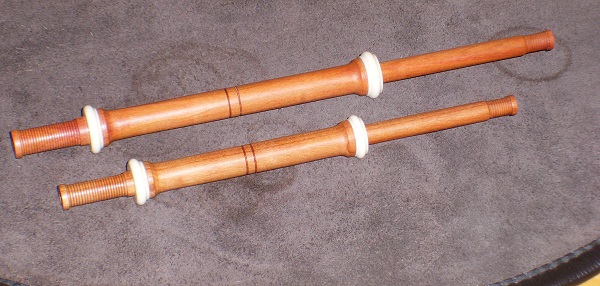
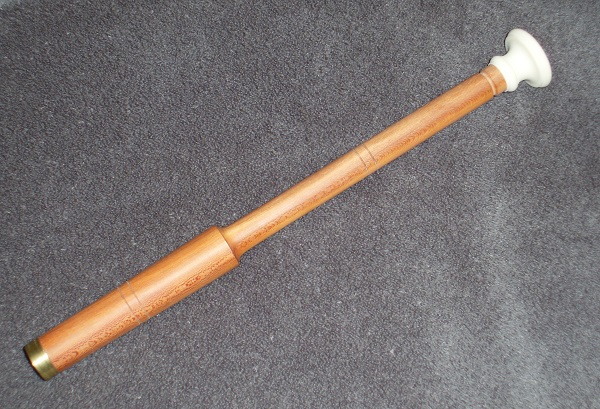


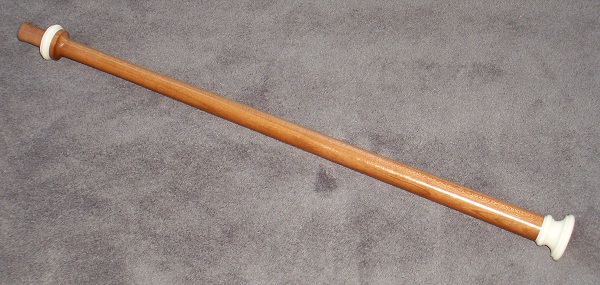
(22 Apr) Well, the worst happened - i got a new job! Which means i've been kind of overwhelmed and haven't had much quality time in the shop. Things are starting to be a little calmer now, so i've been back at it.
Here is the chanter, ready for fingerholes.
This is the last actual turning/machining part, from here on it's polishing, gluing and tying everything together, reedmaking and fine tuning.
We're getting close now!
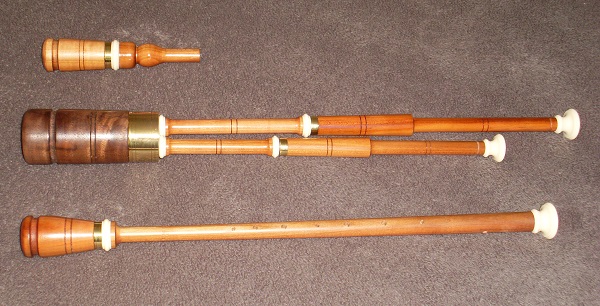
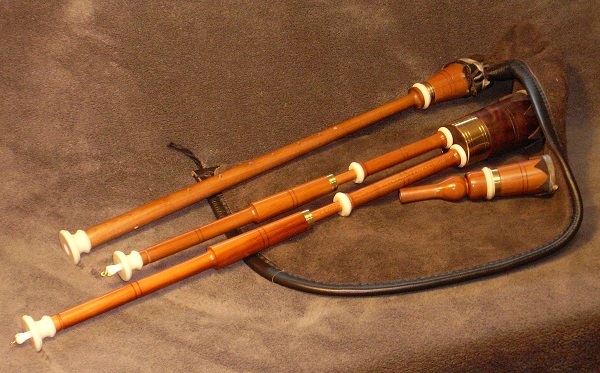
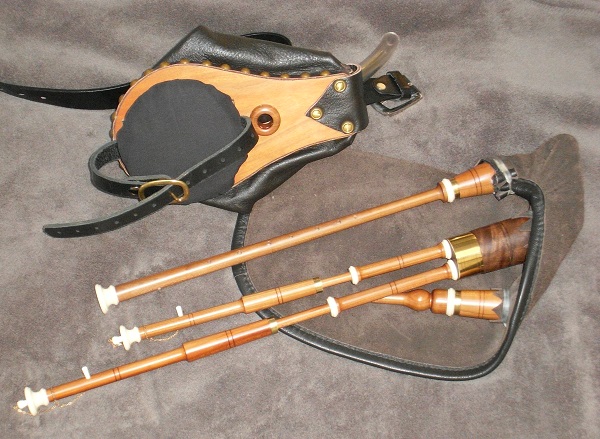
Here is a sound sample with some tunes showing off the different drone configurations.
- March of the King of Laois (drones A & E, using the "normal" fingerhole for C#, giving an A mixolydian scale)
- Bransle d'Ecosse (drones still A & E, but using the French style lower hand thumb hole to play in A dorian)
- A Scots Rant (drones A & D, to play tunes in D major, where the tonic is your "3 finger" note)
- Theme Vannitaise (one drone on B, to play tunes in B dorian, with the tonic on your "5 finger" note)
So just two drones, each with stoppers and a hole to raise the pitch by one tone, plus the lowerhand thumb hole, make this simple little instrument surprisingly versatile.